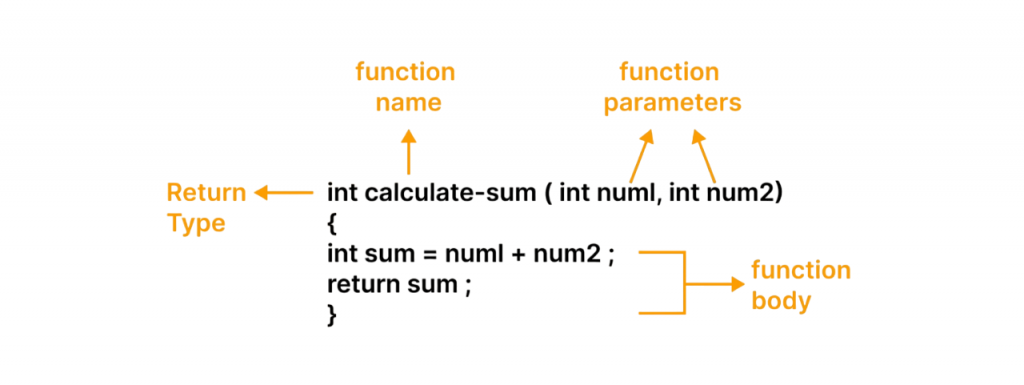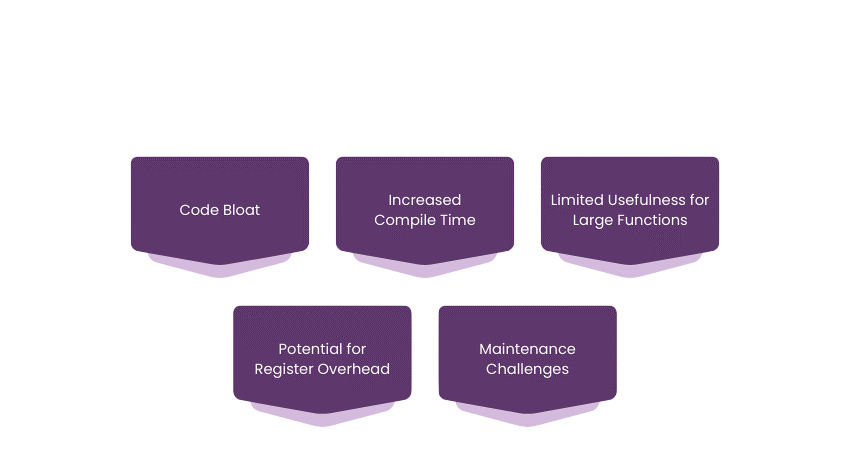
- What is an Inline Function?
- Syntax and Usage
- How the Compiler Treats Inline
- Advantages of Inline Functions
- Limitations of Inline
- Inline vs Macros
- When to Use Inline
- Conclusion
What is an Inline Function?
An inline function in C++ is a special type of function that suggests to the compiler to insert the complete function body wherever the function call is made, instead of performing a normal function call through the stack. This is not a command but a request to the compiler; it may choose to ignore it if it deems the function unsuitable for inlining. The keyword inline is used before the function definition to indicate this intent. Inline functions are generally used for small, frequently called functions where the overhead of a function call is more expensive than the function’s execution itself.An inline function in C++ is a Cloud Computing Training special type of function where the compiler attempts to insert the function’s code directly at each point the function is called, instead of performing a traditional function call. This approach helps eliminate the overhead associated with function calls, such as jumping to the function’s memory address and returning back. Inline functions are typically used for small, frequently called functions where the overhead of calling the function is more significant than the function’s actual execution time. The inline keyword is used before the function definition to request this behavior, although modern compilers often decide whether to inline a function regardless of the keyword. While inlining can improve performance, especially in performance-critical code, excessive use may lead to increased binary size due to code duplication. This can negatively impact instruction cache performance. It’s also important to note that the compiler is not obligated to honor the inline request particularly for complex functions or recursive calls.
To Earn Your Cloud Computing Course Certification, Gain Insights From Leading Cloud Computing Experts And Advance Your Career With ACTE’s Cloud Computing Course Today!
Syntax and Usage
The syntax for defining an inline function is straightforward. You simply place the inline keyword before the function definition. For example:

- #include
- using namespace std;
- inline int square(int x) {
- return x * x;
- }
- int main() {
- cout << "Square of 5 is " << square(5) << endl;
- return 0;
- }
Here, square() is an inline function. When the program compiles, the compiler attempts to replace every call to square() with the actual function code Complete Guide on System Software x * x. This avoids the overhead of a function call at runtime.
How the Compiler Treats Inline
- Request, Not Command: The inline keyword is a suggestion, not a directive. The compiler may choose to ignore it.
- Function Expansion: If the compiler agrees, it replaces the function call with the actual code (function body) at compile time.
- Optimization Decision: Modern compilers perform their own inlining decisions based on optimization criteria (e.g., size, complexity, usage frequency).
- Header File Requirement: Inline functions should be defined in header files because the compiler must see the full definition at every call site to inline it Software Engineering Prototype .
- No Recursion: Recursive functions are generally not inlined, as they can’t be expanded at compile time in a meaningful way.
- Code Size vs. Speed: Inlining improves speed by avoiding function calls, but increases code size (due to duplication of function body).
- Compiler Limits: Very large or complex functions are not inlined, even if marked inline, because they may hurt performance or increase compile time.
- Linker Errors (ODR Violations): Defining non-inline functions in headers can cause multiple definition errors unless they are declared inline.
- Reduced Function Call Overhead – Function calls involve storing return addresses, passing parameters, and jumping to a different memory location. Inlining avoids this overhead.
- Improved Performance for Small Functions – When a function is very small and is called multiple times, inlining can speed up execution Cloud Computing Training.
- Code Readability with Speed – Developers can write clean, separate function code without sacrificing speed.
- Better Compiler Optimization – Since the compiler sees the actual code during inlining, it can optimize it better.
- Parameter Type Checking – Unlike macros, inline functions have type safety.
- Code Bloat – If an inline function is large and called many times, replacing calls with actual code increases the program size.
- Longer Compilation Time – What is Software Engineering More code is inserted at multiple places, increasing compile-time processing.
- Debugging Complexity – Tracing inlined functions during debugging is harder because the function call stack is absent.
- Not Guaranteed – The compiler can ignore the inline keyword.
- Poor for Large Functions – Inlining large functions can degrade performance due to instruction cache misses.
- Definition: Inline functions are defined using the inline keyword in C++; macros use #define for text substitution.
- Type Checking: Inline functions are type-checked by the compiler; macros have no type checking.
- Scope: Inline functions follow C++ scope and namespaces; macros have no scope and can cause naming conflicts.
- Debugging: Inline functions are easier to debug with meaningful errors; macros are harder to debug since they are replaced before compilation.
- Compilation: Inline functions are handled by the compiler during compilation; macros are processed by the preprocessor before compilation Exploring Software Engineering.
- Argument Evaluation: Inline function arguments are evaluated once; macro arguments can be evaluated multiple times, causing side effects.
- Functionality: Inline functions support complex logic, loops, and overloading; macros only perform simple text substitution.
- Code Safety: Inline functions are safer and less prone to errors; macros can introduce subtle bugs due to blind substitution.
- Performance: Inline functions can improve performance without excessive code bloat; macros may increase code size and cause hard-to-find bugs.
- Usage: Inline functions are recommended for small functions; macros are generally discouraged except for constants or conditional compilation.
Would You Like to Know More About Cloud Computing Course? Sign Up For Our Cloud Computing Course Now!
Advantages of Inline Functions
Limitations of Inline
While Limitations of Inline offer performance advantages, they also come with limitations:

Gain Your Master’s Certification in Cloud Computing by Enrolling in Our Cloud Computing Master Program Training Course Now!
Inline vs Macros
Are You Interested in Learning More About Cloud Computing Course? Sign Up For Our Cloud Computing Course Today!
When to Use Inline
Inline functions in C++ are best used when you have small, frequently called functions where the overhead of a regular function call could negatively impact performance. Common examples include simple getter and setter methods, small mathematical computations, or utility functions that perform minimal work. By marking these functions as inline, you suggest to the compiler to replace the function call with the actual code, reducing the cost associated with calling a function such as stack operations StringBuilder and jumps. However, it’s important to use inline functions judiciously. Overusing them for large or complex functions can increase the executable size due to code duplication, Inline and Performance which might hurt cache performance and overall efficiency. Modern compilers are quite good at automatically inlining functions without the explicit keyword, so the inline keyword is more of a request than a command. In summary, use inline functions for small, performance-critical code where reducing function call overhead makes a noticeable difference.
Preparing for Cloud Computing Job Interviews? Have a Look at Our Blog on Cloud Computing Interview Questions and Answers To Ace Your Interview!
Conclusion
Inline functions in C++ offer a powerful way to optimize small, frequently used functions by reducing function call overhead and potentially improving performance. They provide type safety, better debugging, and proper scoping compared to macros, making them a safer and more modern choice Cloud Computing Training. However, their use should be balanced, as excessive inlining can lead to larger binaries and possible performance degradation due to code bloat. Ultimately, understanding when and how to use inline functions along with trusting the compiler’s optimization decisions helps write efficient, maintainable, and high-performance C++ code.





